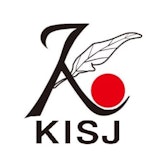この記事もチェック
-
 動画記事 2:55
動画記事 2:55埼玉県春日部市の地下奥深くには、パルテノン神殿さながらの幻想的な巨大施設が!?首都圏外郭放水路は、埼玉県を洪水から守るための救世主だった!
芸術・建築物- 183 回再生
- YouTube
-
 動画記事 3:08
動画記事 3:08震災の怖さをリアルな体験から学べる。瓦礫の街や津波の疑似体験で、いつ起こるかわからない震災への心構えができる関西地方の防災学習施設を紹介!
体験・遊ぶ- 510 回再生
- YouTube
-
 動画記事 1:45
動画記事 1:45台風の被災地でボランティア活動をするラグビーカナダ代表チームの姿に日本中が感動!2019年に話題を集めたラグビーワールドカップの裏側には被災者達が勇気づけられた秘話があった。
ニュース- 43 回再生
- YouTube

![[画像1][Englsih/日本語]esterday, 27 years have passed since the Great Hanshin-Awaji Earthquake. 6,434 people d](https://img-cooljapan.imgix.net/member_posts/image/1bb4f3313b48f13d88e2b24427d6e95181b78084.jpg?w=480&h=480&fit=min&auto=format&q=70)
![[画像2][Englsih/日本語]esterday, 27 years have passed since the Great Hanshin-Awaji Earthquake. 6,434 people d](https://img-cooljapan.imgix.net/member_posts/image/303ef12733c57ec87f74fb4bce7a617f883f2445.jpg?w=240&h=240&fit=min&auto=format&q=70)

